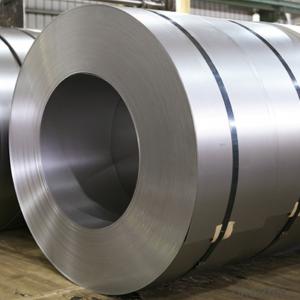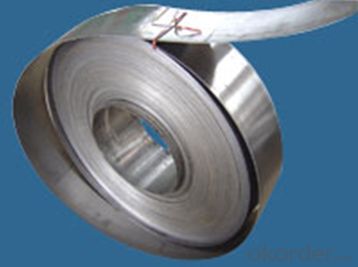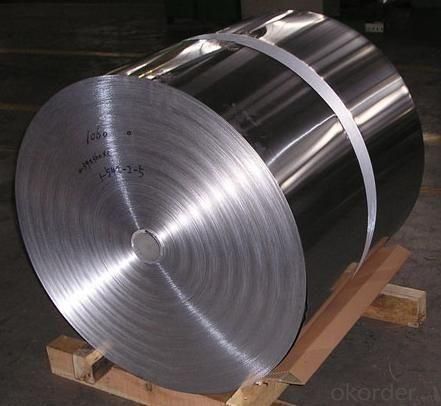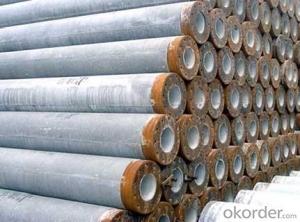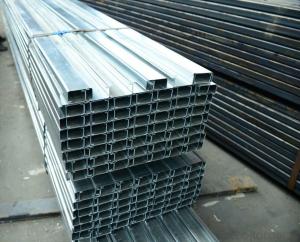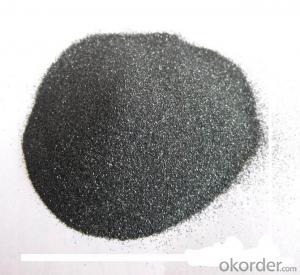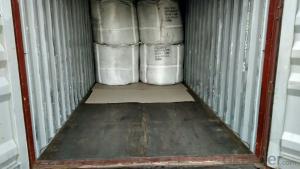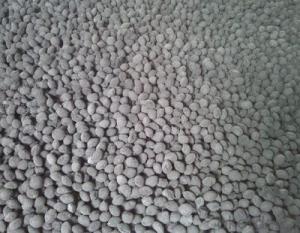Supply For Silicon Steel and Electric Steel
- Loading Port:
- Shanghai
- Payment Terms:
- TT OR LC
- Min Order Qty:
- 50 kg
- Supply Capability:
- 4000 kg/month
OKorder Service Pledge
OKorder Financial Service
You Might Also Like
1.Description:
Silicon steel containing silicon content is 0.5 to 4.5% of very low carbon ferrosilicon alloy, due to the different structure and use is divided into non oriented silicon steel and grain oriented silicon steel. Silicon steel is mainly used for motors, generators, compressors, motors and transformers core, is the electric, home appliances and other industries indispensable raw materials products.
Silicon steel sheets cold rolling, hot-rolled two, the use of more cold-rolled silicon steel sheet. Cold-rolled silicon steel sheet along the rolling direction with excellent magnetic properties, not only in the strong magnetic field has high saturation magnetic flux density and low loss, but also have good magnetic properties (initial permeability) in the weak magnetic field. Because of the cold rolling process, the impurity content of the steel sheet is decreased, and the coarse grain is caused, and the magnetic permeability is increased and the hysteresis loss decreases.
2.Product characteristic:
The main requirements for the silicon steel properties are:
1, low iron loss, this is the most important quality index of silicon steel sheet. All core loss grades according to the lower grades, the iron loss, the higher.
2, a strong magnetic field of magnetic induction (magnetic), which makes the motor and transformer core volume and weight, saving silicon steel, copper and insulating materials, etc..
3, the surface is smooth, flat and thickness uniformity, can improve the core fill factor.
4, good film, for manufacturing micro, small motor is more important.
5, the adhesion and welding of the surface insulation film is good, can prevent and improve the film.
3.Specifications :
Material: B50A470
0.5*1200*C, 0.5*1000*C
4.Reference picture:
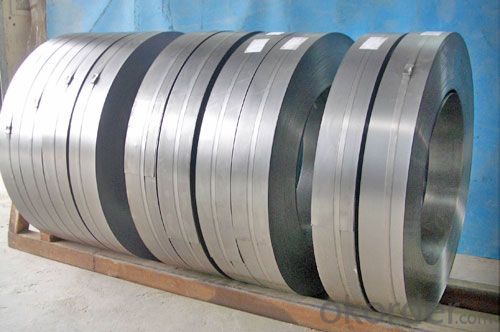
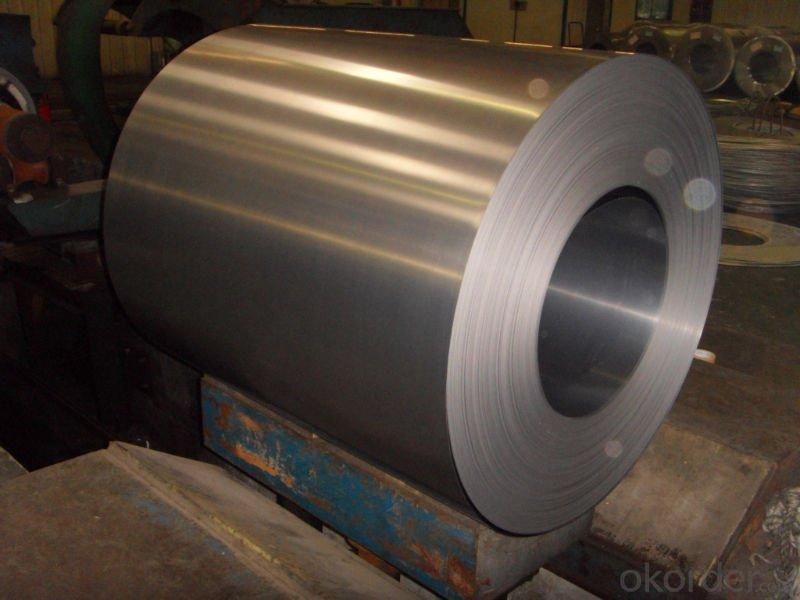
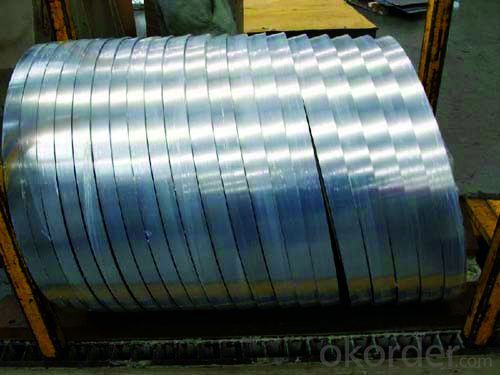
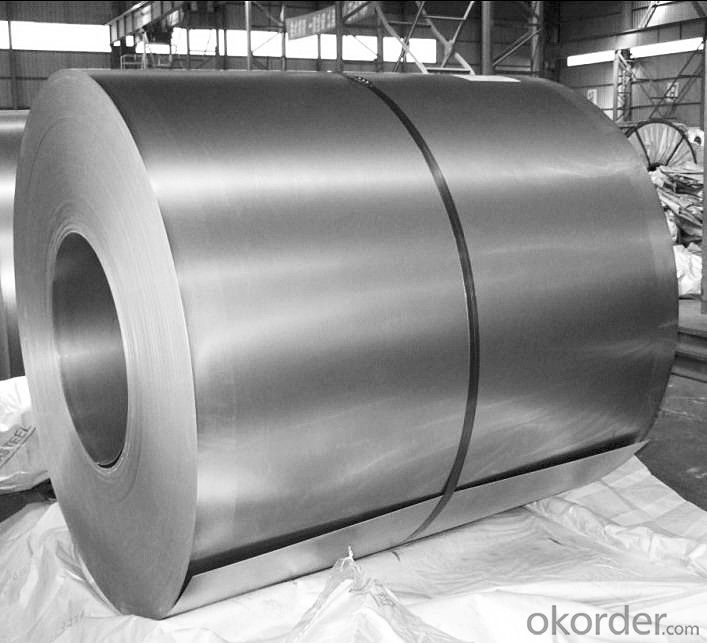
Material: B50A470
Origin / manufacturer :Shanghai Baoshan Iron & Steel Co.
Stock:Jiayin Stock
Specifications :0.5*1200*C, 0.5*1000*C
- Q: Can silicon steel be used in electric vehicle components?
- Electric vehicle components can indeed utilize silicon steel. This particular type of steel, also called electrical steel, has been specifically crafted for electrical applications. It is created by adding silicon to low carbon steel, which aids in reducing energy losses during the flow of electricity through the material. Various components in electric vehicles can incorporate silicon steel. One common use is in the construction of the electric motor. The motor converts electrical energy into mechanical energy, and silicon steel is employed in the motor's core to enhance efficiency. The high magnetic permeability of silicon steel allows for better magnetic flux, resulting in reduced energy losses and improved motor performance. Silicon steel can also find application in other parts of an electric vehicle's powertrain, such as transformers and inductors. These components play a crucial role in the efficient conversion and transmission of electrical energy within the vehicle. By utilizing silicon steel in these parts, the powertrain can operate more efficiently, leading to overall performance improvements and energy savings. Apart from its electrical properties, silicon steel also possesses commendable mechanical strength. This makes it suitable for use in various structural components of an electric vehicle, including chassis and body parts. It provides both strength and electrical efficiency. In summary, silicon steel is a versatile material that can be employed in different electric vehicle components. Its electrical and mechanical properties make it an ideal choice for enhancing the efficiency and performance of electric vehicles.
- Q: The silicon steel sheet in the motor and transformer does not need the insulation between the sheet and the sheet to reduce the eddy current loss
- You see, as long as it's not a whole piece of silicon steel, it looks like layers of layers, and that's insulated, in fact, very low resistance, Ohm level.
- Q: How does the grain orientation of silicon steel affect its performance?
- The grain orientation of silicon steel plays a crucial role in determining its performance. Silicon steel, also known as electrical steel, is primarily used in electrical components and transformers due to its excellent magnetic properties. The orientation of grains in silicon steel affects its magnetic behavior, specifically its magnetic permeability and core losses. Magnetic permeability is the ability of a material to conduct magnetic flux, while core losses refer to the energy dissipated as heat when a magnetic field is applied to the material. When the grains in silicon steel are properly oriented, the magnetic permeability increases, leading to enhanced magnetic performance. This means that the material can efficiently conduct magnetic flux, resulting in better efficiency and performance of electrical devices. Furthermore, the grain orientation also influences the core losses in silicon steel. When the grains are aligned in a preferred direction, the core losses are minimized. This is because the aligned grains provide a clear path for the magnetic field, reducing the energy dissipation and heat generation within the material. Lower core losses translate into improved overall efficiency and reduced energy consumption in transformers and other electrical devices. To achieve the desired grain orientation, silicon steel is typically subjected to a process called annealing. During annealing, the steel is heated and then slowly cooled to allow the grains to align in a specific direction. This controlled grain orientation enhances the magnetic properties and performance of the silicon steel. In summary, the grain orientation of silicon steel significantly impacts its performance. Properly oriented grains result in increased magnetic permeability and reduced core losses, leading to enhanced efficiency and reduced energy consumption in electrical components and transformers.
- Q: How does the silicon content affect the eddy current loss in silicon steel?
- The eddy current loss in silicon steel is directly influenced by the amount of silicon present in the material. When subjected to a changing magnetic field, induced currents flow within the material, causing the eddy current loss. Increasing the silicon content in silicon steel results in a decrease in the material's electrical conductivity. This decrease in electrical conductivity restricts the flow of induced currents, thus reducing the eddy current loss. This is due to silicon being a semiconductor with higher resistivity compared to other metals. By increasing the silicon content, the material's conductivity decreases, limiting the ability of induced currents to circulate within the material. As a result, the eddy current loss is minimized. Hence, the silicon content plays a crucial role in controlling the eddy current loss in silicon steel. Higher silicon content leads to reduced electrical conductivity, which in turn decreases the eddy current loss. This makes the material more suitable for applications where minimizing energy losses is crucial, such as in transformers and electric motors.
- Q: What are the limitations of using silicon steel?
- Using silicon steel in various applications comes with several limitations. Firstly, it is relatively expensive compared to other materials due to the addition of silicon during its production process, which increases manufacturing costs. This cost factor often makes it less favorable for budget-conscious projects or industries. Secondly, although silicon steel possesses excellent magnetic properties, it has a limited maximum saturation flux density. This means that it cannot achieve as high magnetic field strength as some other materials. Consequently, alternative materials may be more suitable for applications requiring intense magnetic fields. Moreover, silicon steel has a relatively low resistivity. While this characteristic is desirable for certain applications, it can result in increased eddy current losses. Eddy currents are circulating currents induced by a changing magnetic field, and their presence can cause energy losses and heat generation. Hence, other materials with higher resistivity may be preferred in high-frequency applications where minimizing eddy current losses is crucial. Another drawback of silicon steel is its susceptibility to corrosion. Without proper protection, it can rust and deteriorate over time, particularly in environments with high humidity or exposure to corrosive substances. To ensure the longevity and performance of silicon steel components, additional measures such as coatings or proper maintenance are necessary. Lastly, silicon steel has relatively low mechanical strength and hardness compared to some other materials. This limits its use in applications that require high mechanical stability or resistance to wear and tear. In such cases, alternative materials with superior mechanical properties may be more suitable. Overall, while silicon steel offers excellent magnetic properties and is widely used in various electrical and electronic applications, it is important to consider its limitations in terms of cost, magnetic saturation, resistivity, corrosion resistance, and mechanical strength when selecting materials for specific applications.
- Q: How does the magnetic anisotropy of silicon steel affect its magnetization process?
- Silicon steel's magnetization process is significantly impacted by its magnetic anisotropy. Anisotropy refers to how a material's magnetic properties depend on direction. In the case of silicon steel, its crystal structure and silicon content contribute to a strong magnetic anisotropy. The magnetization process of silicon steel is affected by its magnetic anisotropy in several ways. Firstly, it determines the preferred direction of the magnetic domains within the material. Magnetic domains are tiny regions where the magnetic moments align in the same direction. Silicon steel's anisotropy aligns these domains along a specific direction called the easy axis. Consequently, the material prefers to be magnetized along this easy axis. Secondly, the magnetic anisotropy influences the coercivity of silicon steel. Coercivity measures a material's resistance to demagnetization. In the case of silicon steel, anisotropy contributes to a higher coercivity. This means that a stronger external magnetic field is required to demagnetize the material. This property makes silicon steel suitable for applications that require stable and long-lasting magnetization, such as transformers and electric motors. Lastly, the magnetic anisotropy affects the shape of the hysteresis loop in silicon steel. The hysteresis loop represents the relationship between magnetic field strength and material magnetization. In silicon steel, anisotropy can elongate and symmetrically shape the hysteresis loop, indicating high magnetic quality. This property is desirable for applications that require low energy loss and high efficiency, like power transformers. In conclusion, silicon steel's magnetization process is influenced by its magnetic anisotropy, which determines the preferred orientation of magnetic domains, increases coercivity, and shapes the hysteresis loop. These properties make silicon steel well-suited for various electrical and magnetic applications.
- Q: Can silicon steel sheet be cut with laser? Without punching machine, what are the advantages and disadvantages of laser cutting and punching machine? Which is better?
- The punching machine has the problem that there is no heat influence, the disadvantage is that there is danger of jumping film, and the hardness of the punch is easy to be damaged because of the problem of hardnessFinally, one thing to say is that the stress in the silicon steel sheet will be met, but the process is better than the laser
- Q: How does the surface finish affect the magnetic properties of silicon steel?
- The surface finish of silicon steel can significantly affect its magnetic properties. A smooth surface finish helps reduce magnetic losses in the material by minimizing eddy currents, resulting in improved magnetic permeability and lower hysteresis losses. On the other hand, a rough or oxidized surface can increase magnetic losses, leading to decreased efficiency and performance of magnetic components made from silicon steel. Therefore, a proper surface finish is crucial in optimizing the magnetic properties of silicon steel.
- Q: What are the different methods used for measuring the magnetic properties of silicon steel?
- There are several methods used for measuring the magnetic properties of silicon steel, including the Epstein frame method, the single sheet tester method, and the hysteresis loop method. Each of these methods involves applying an alternating magnetic field to the material and measuring its response, such as the magnetic flux density, magnetic induction, or magnetic permeability. These measurements help characterize the magnetic behavior of silicon steel, which is important for understanding its suitability for various applications, such as in electrical transformers or motors.
- Q: Instrument for measuring insulation resistance of silicon steel sheet coating
- As far as I know, at present, there is no quality inspection institution in China to carry out quality inspection of this instrument. If you would like to know more details, please send it to me. I will send you the details.
Send your message to us
Supply For Silicon Steel and Electric Steel
- Loading Port:
- Shanghai
- Payment Terms:
- TT OR LC
- Min Order Qty:
- 50 kg
- Supply Capability:
- 4000 kg/month
OKorder Service Pledge
OKorder Financial Service
Similar products
Hot Searches
